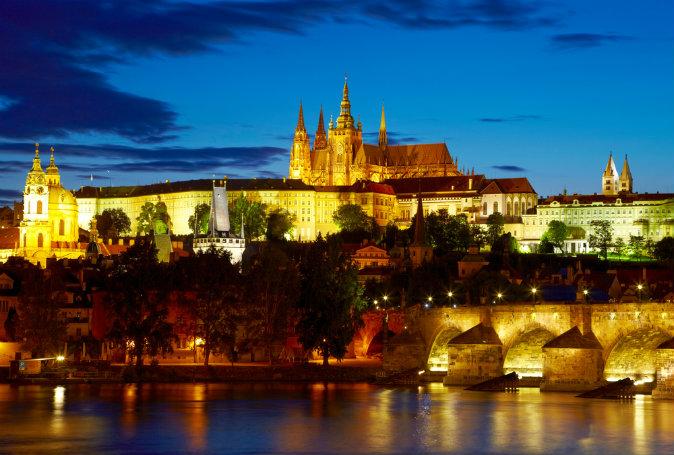Prague, the capital and largest city of the Czech Republic, and historical capital of Bohemia proper, was founded circa 885 AD. Overall, the city is quiet and resembles a smaller version of Paris. The Czech state, formerly known as Bohemia, was formed in the late 9th century as a small duchy around Prague, at that time under the dominance of the powerful Great Moravian Empire. After the fall of the Empire in 907, the center of power was transferred from Moravia to Bohemia. From 1198 to 1918 the state was known as the Kingdom of Bohemia, from 1918 to 1968 Czechoslovakia, after which it was the Czech Socialist Republic, and finally in 1993, the Czech Republic. After all the power changes, the Bohemian roots are still evident in the architecture, lifestyle and multitude of infamous Absinthe stores/bars.
City size: 192 sq. miles. (But the center is more like 32 sq. miles)
Transportation ease: very easy (walk/trolleys/bus)
Currency: Czech koruna (Czech Crown)
Exchange rate:1USD = 19.2 Crowns
1 Euro= 25.66 Crowns
Money Denominations: 1, 2, 5, 20, 50 are coins; 100, 200, 500 are paper (which means you will have a pocket full of jingling change, as you will constantly get change in coins)
Purchasing power of dollar (according to me): fairly good. Ex. A beer in the center of the city (Praha 1) roughly $2.50; dinner, roughly $18.00
Time: Central European Time Zone (6 hours ahead of NY time; EST)
I started off my trip by arriving at the Prague Václav Havel Airport, coming from Kiev, Ukraine. My first impression was quite profound, noticing the English being accompanied by Czech, as well as Russian and Korean. Why would anyone place signs in Korean, in the middle of Europe you may ask? Well, turns out that a Korean airline has bought out a large share of the airport and is planning on making it its main transfer hub in Europe. Shortly after landing, I have arrived at my hotel, Gallery Hotel SiS, which is infamously known for its Absinthe Bar. Before I get into the location of the hotel, it is important to know that Prague is divided into ten numbered districts, with “Praha 1” being the cultural center of the city. Gallery Hotel is located in the Praha 4 district, which is a 20-minute walk or 10-minute trolley ride from Praha 1.


